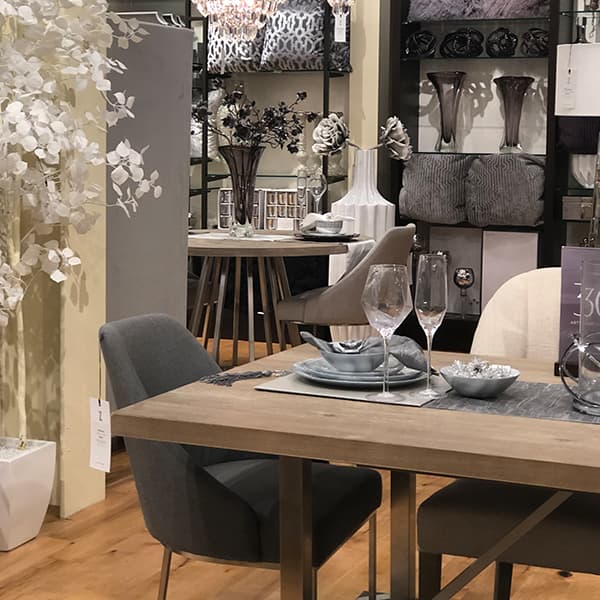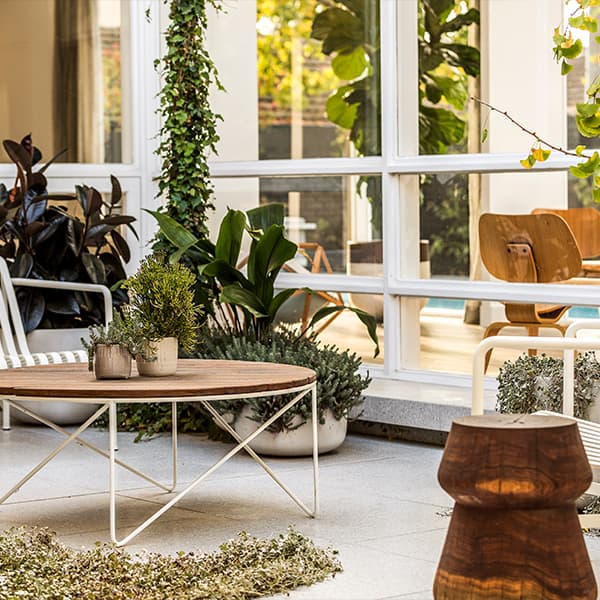In today’s urban landscape, compact living spaces have become more than just a trend; they’re a necessity. But even though your living area might be limited in size, it can still be short on style. With the right furniture and design choices, even the tiniest of spaces can make a grand statement. One such piece that can transform a space is the round wood coffee table. Let’s dive into how you can maximize style in your snug space.
The Power of the Wood Table
Aesthetic Appeal
- Natural Beauty: The inherent charm of wood is undeniable. From the intricate grain patterns to the rich, deep hues, wood exudes a timeless elegance. When incorporated into a coffee table, especially one with a round design, it becomes a focal point, drawing the eye and inviting a touch. This natural element brings a touch of the outdoors inside, creating a harmonious balance in any living space.
- Versatility: The beauty of a round wood coffee table lies in its adaptability. Whether you’re a fan of the rustic farmhouse look, the sleek lines of modern design, or the eclectic mix of boho-chic, this piece of furniture effortlessly complements your aesthetic. Its neutral tones and classic shape make it a versatile choice, ensuring it remains a staple even if you decide to change your decor.
- Craftsmanship: Often, round wood coffee tables showcase the artistry of skilled craftsmen. The meticulous attention to detail, the smooth finish, and the sturdy build all speak of dedication and passion. Investing in such a piece means you’re not just buying furniture; you’re owning a work of art.


Functionality Meets Style
- Space-Saving Design: The circular shape of a round wood coffee table is a boon for small spaces. Without protruding edges, it allows for easier navigation, especially in rooms where every inch counts. This design ensures that you can move freely without the fear of bumping into sharp corners.
- Ample Surface Area: Despite its compact design, the round table offers a generous surface. Whether you’re setting down your steaming mug of coffee, displaying your favorite books, or placing a vase of fresh flowers, there’s room for it all. The absence of corners actually provides more usable space, making it a practical choice for daily use.
- Durability: Wood, by nature, is sturdy and long-lasting. Crafted into a coffee table, it promises years of use without significant wear and tear. This durability, combined with timeless style, ensures that your round wood coffee table remains a cherished piece for years to come.
- Ease of Maintenance: Another advantage of wood is its ease of maintenance. A simple wipe-down with a damp cloth is often enough to keep it looking pristine. And even if it gets scratched or stained, refinishing can bring it back to its original glory.
Tips for Styling Small Living Areas
Opt for Multi-functional Furniture
- Versatility in Compact Spaces
In the realm of compact living, versatility is paramount. Every piece of furniture should not only be aesthetically pleasing but also serve multiple functions. Take the round wood coffee table, for instance. Beyond its visual appeal, it offers potential storage solutions and can even act as an impromptu dining spot.
- The Multi-functional Ottoman
Ottomans are not merely footrests. A significant number of them come equipped with concealed storage compartments. These hidden spaces are ideal for tucking away items like blankets, magazines, or toys. Moreover, when you have guests, ottomans can effortlessly transform into additional seating options.
- The Magic of Sofa Beds
For those residing in studio apartments or homes lacking a dedicated guest room, sofa beds are nothing short of revolutionary. During the day, they provide a comfortable lounging area. But as night falls, they metamorphose into a snug sleeping haven.
- Discovering Nesting Tables
Nesting tables are an ingenious solution for those times when you require extra surface space. They consist of sets of progressively smaller tables that can be conveniently stacked together. Whether you’re hosting guests or simply need more room to work, just pull out an additional table from the set.
- Embracing Extendable Tables
Drop-leaf or extendable tables are the epitome of adaptability. Perfect as dining tables or workspaces, they can be expanded to accommodate more people or tasks. And when they’re not needed to their full capacity, they can be easily folded back, ensuring that space is utilized efficiently.
Play with Vertical Space
The Wonders of Wall-mounted Shelves
For those grappling with limited space, wall-mounted shelves come as a blessing. They not only enhance your storage capabilities but also liberate precious floor space. Whether you’re showcasing books, decorative items, or kitchen essentials, these shelves are up to the task. For added flexibility, consider modular systems that can be tailored to your specific requirements.
Embracing Greenery with Hanging Planters
Adding a touch of green to your interiors doesn’t necessarily mean giving up table or floor real estate. Hanging planters, be they from the ceiling or affixed to walls, infuse nature into your space without adding to the clutter. They’re a perfect solution for plant aficionados who might not have the luxury of space for conventional pots.
The Art of Vertical Gardens
For the true plant lover, a vertical garden can be a dream come true. By dedicating a wall to this living tapestry, you can incorporate a multitude of plants without compromising on floor space. Beyond its aesthetic appeal, it’s a testament to innovative space utilization.
Trendy Ladder Shelves
Ladder shelves are both chic and practical. Designed to lean against a wall, these shelves expand in size from the top tier downward. They’re versatile, making them ideal for holding books, ornaments, or even essentials in a bathroom setting.
The Illusion of Space: Light and Color
Creating an illusion of space is a designer’s trick that can transform even the most compact areas into seemingly expansive havens. A combination of light and color can work wonders in achieving this effect. Here’s a deeper dive into how you can make your space feel brighter and more spacious:
Use Light Shades
The power of pale hues cannot be overstated. Colors like whites, creams, and pastels have an innate ability to reflect light, which in turn gives the room an airy and open feel. By painting walls and ceilings or even choosing light-colored furniture and textiles, you can instantly make a space feel larger than it actually is.
Mirrors: More Than Just Reflective Surfaces
Mirrors are not just for checking your reflection. When placed strategically, they can magnify the perception of space. By reflecting light and other parts of the room, mirrors can effectively double the room’s visual depth. Consider placing a large mirror opposite a window to maximize natural light, or use multiple smaller mirrors in a decorative pattern to add both style and spaciousness.
Transparent Furniture
Incorporating transparent furniture into your decor is a clever way to retain functionality without overwhelming the space. Pieces made of materials like glass, acrylic, or lucite are visually lightweight. A glass coffee table, for instance, offers the utility of a surface without the visual bulk. Similarly, acrylic chairs can provide seating without crowding the room. These transparent pieces ensure the eye travels freely, making the room feel uncluttered and expansive.
Additional Tips:
- Ceiling-to-Floor Curtains: Using curtains that stretch from the ceiling to the floor can elongate the appearance of your windows, making the ceilings seem higher and the room more grand.
- Consistent Color Palette: Keeping a consistent color palette, especially with lighter shades, can create a seamless look, making the space feel unified and larger.
By integrating these elements into your design strategy, you can craft an environment that feels open, welcoming, and far more expansive than its actual dimensions.
Declutter: The Golden Rule of Small Spaces
In the world of interior design, especially when dealing with limited spaces, decluttering stands as a cardinal principle. The equation is straightforward: the less clutter you have, the more spacious and breathable your room feels. But how can you achieve this without sacrificing the essence of your personal style?
Regular Assessments
It’s essential to periodically evaluate your possessions. Ask yourself, “Have I used this in the last year?” or “Does this item bring value or joy to my life?” Such introspection can help you discern between what’s essential and what’s merely occupying space.
Smart Storage Solutions
Invest in furniture that doubles up as storage. For instance, beds with drawers underneath or ottomans that open up to store blankets can be game-changers. These solutions allow you to keep necessary items within reach without them being in plain sight.
Minimalism as a Lifestyle
Embracing a minimalist approach doesn’t mean living in an empty space. It’s about prioritizing quality over quantity. Choose items that not only serve a functional purpose but also resonate with your aesthetic. A round wood coffee table, for example, can be both a functional piece and the focal point of your living room.
Statement Pieces
While decluttering is key, it’s equally important to have pieces that reflect your personality. A statement art piece, a unique lamp, or even a collection of books can infuse life and character into your space. The trick is to balance these statement pieces with the overall simplicity of the room.
Decluttering is more than just a design choice; it’s a lifestyle adaptation that promotes clarity, both in space and mind. By ensuring each item in your space has purpose and meaning, you can create a harmonious environment that feels spacious, welcoming, and uniquely yours.
















